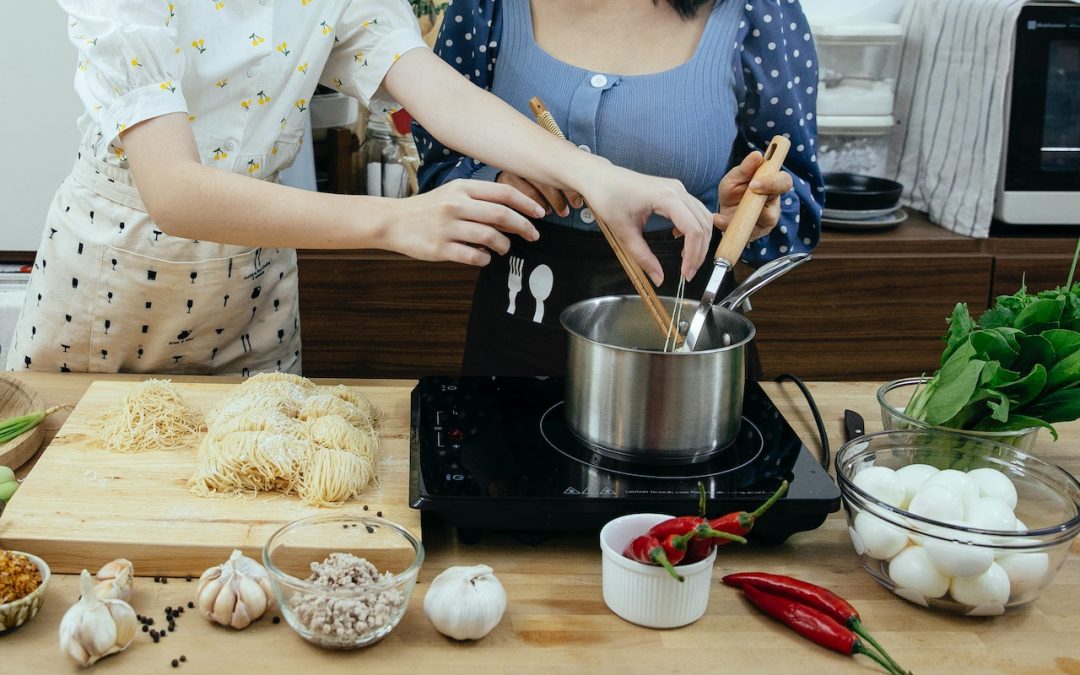Your kitchen is one of the places you can be exposed to a large number of toxins! There are a lot of dangerous toxins hiding in cookware items, storage items, utensils, and more. As I mentioned in my previous blogs on toxins in skincare products and chemical cleaners, toxins can lead to cancer, reproductive problems, kidney and lung problems, digestive problems, learning disabilities, and more. Find out about these dangerous toxins, health issues they cause, and the safest cooking utensils, pots, pans, water bottles, and more.
Just a Reminder: Blog does contain Affiliate links. If you buy something, I’ll possibly make a small commission from it, but at no additional cost to you.
Dangerous Toxins in Plastics
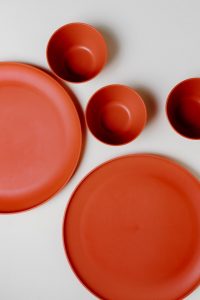 Plastics are of the most common items found in the kitchen, and yet also one of the most dangerous. BPA (Bisphenol A) is one of those dangerous toxins found in plastics.
Plastics are of the most common items found in the kitchen, and yet also one of the most dangerous. BPA (Bisphenol A) is one of those dangerous toxins found in plastics.
BPA is present in: plastic plates, water bottles, cups, bowls, silverware, tupperware, plastic wrap, plastic bags, baby bottles, packaging materials, etc.
Toxins in the Body
Research in humans has linked even low-dose BPA exposure to cardiovascular problems, including coronary artery heart disease, angina, heart attack, hypertension, and peripheral artery disease (Medical News Today, 2021). One study shows that 95% of us have BPA in our bodies at this very moment.
In recent years BPA has gained a lot of attention and many products are now labeled BPA-free. But when something is labeled “BPA free” does that mean it is made with safe ingredients? One of the common replacement products used is BPS. It has been shown to be harmful to the functioning of the heart and has been linked to childhood obesity.
History of BPA -> Why we can’t trust any plastics are truly safe.
It took 78 years for the government to propose any restrictions!
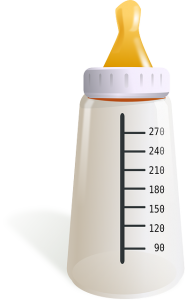 As I’ve mentioned previously, there is very little intervention from the government when it comes to making sure the products that line are shelves are free from toxins. It was actually discovered that BPA is an artificial estrogen by scientists back in 1930 and it wasn’t until 2008 that action was actually taken. Part of that problem is conflicts of interest which were discovered in 2007. EWG learns that Sciences International, the firm reviewing BPA toxicity for the government, has corporate clients like Dow Chemical and BASF that are major manufacturers of BPA (EWG, 2008).
As I’ve mentioned previously, there is very little intervention from the government when it comes to making sure the products that line are shelves are free from toxins. It was actually discovered that BPA is an artificial estrogen by scientists back in 1930 and it wasn’t until 2008 that action was actually taken. Part of that problem is conflicts of interest which were discovered in 2007. EWG learns that Sciences International, the firm reviewing BPA toxicity for the government, has corporate clients like Dow Chemical and BASF that are major manufacturers of BPA (EWG, 2008).
BPA is still not banned from being used in all products. BPA is banned in many products on state levels, but mostly the FDA has just banned BPA for baby bottles, sippy cups, and infant formula packaging.
You can read the long history of how BPA was added to products to it becoming eliminated from some products on EWG: Timeline: BPA from Invention to Phase-Out.
In addition to kitchen items, it can also be found in children’s toys, electronic components, medical devices, safety helmets, sunglasses, etc. BPA is the most dangerous when heated or cooled since it can more easily leach into food. You should never heat any plastic in the microwave and avoid placing it in the dishwasher, as well. Polyethylene and polypropylene can break down when heated causing chemicals to leach into foods and drinks. Even if something says “dishwasher or microwave safe” you are trusting the manufacturer.
The FDA does not oversee this. When plastic starts to visibly show signs of degrading it is time to get rid of it.
Plastics Harm the Environment
We consume it in our drinking water!
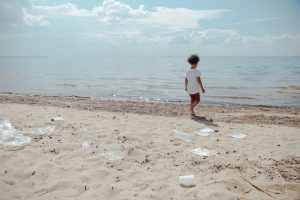 I’m not going to dive deep into this, but plastics are also harmful to the environment.
I’m not going to dive deep into this, but plastics are also harmful to the environment.
Some facts from Giving Compass:
Every minute of every day a truckload of plastic is dumped into the ocean.
Over the past 50 years, world plastic production has doubled.
The average person eats 70,000 microplastics each year (we consume microplastic through drinking water both bottled and tap).
Due to plastics and other toxins that enter our drinking water, it is advised to test your water.
Test your water! This 17 parameter kit covers all the main contaminants you need to worry about. Includes: Lead, Bacteria (E. Coli / Water Contamination), Fluoride, Iron, Copper, Sulfate, Zinc, Hydrogen Sulfide, Total chlorine, Nitrite, Nitrate, pH, Total Alkalinity, Hardness, Free Chlorine, Sodium Chloride, and Manganese! 17 in 1 Premium Drinking Water Test Kit – 100 Strips + 2 Bacteria Tests Buy here.
A Reverse Osmosis System is the best choice for ensuring clean drinking water.
Here is the Reverse Osmosis System we have. It removes up to 99% of contaminants. My husband and I have actually helped at least four different friends buy this exact system. It is the best thing out there! APEC Water Systems ROES-PH75 Essence Series Top Tier Alkaline Mineral pH+ 75 GPD 6-Stage Certified Ultra Safe Reverse Osmosis Drinking Water Filter System Buy Here.
If you are renting or can’t currently afford one, check out some of the products on Aquaspace.com and Aquasana.com
Other Dangers in Plastic
BPA is not the only dangerous thing found in plastics. Phthlates are also known to be endocrine disruptors and have been linked to respiratory problems, neurodevelopmental issues, and allergies in children.
Considering the dangerous chemicals already found to be in plastics, I personally find it is better to avoid them when possible. There are many great solutions for removing plastics from your kitchen! It may be hard to replace plastic bags and plastic wrap, but you can utilize glass tupperware or stainless steel tupperware for many situations.
Read on for ideas on the safest cooking utensils.
Safest Cooking Utensils
Tupperware, Bowls, and More
Over time, I have slowly replaced products in my kitchen to minimally use plastic. Approximately 80% of the products I’m sharing from Amazon I have either purchased from Amazon or in the store. I love my pyrex. It is safe to cook with, it is great for storage, and it lasts! I haven’t had to replace any of my pyrex bowls, tupperware, or measuring cups since I bought them over 10 years ago.
Non Toxic Cooking Utensils, Cutting Boards, and Measuring Cups
Even wood cutting boards can have chemical coatings that can leach into your food. So that’s why I purchased organic bamboo cutting boards. Bamboo is supposed to be more durable than other woods and more gentle on knife edges.
Safe Cups for Kids, Safe Glassware, and Water Bottles
As a kid I remember I always reaching for plastic cups and plates over glass, even though I was old enough to handle glass cups or ceramic plates. I liked that they were light-weight and I didn’t have to worry about breaking them. I also remember we did heat some things up in the microwave that were plastic. It amazes me how much toxins I was exposed to as a kid unknowingly.
To be safe from toxins your best choice is to drink out of glasses or stainless steel. Avoid using store-bought, disposable plastic water bottles the best you can. I know sometimes they are more convenient. I use them when I go hiking.
CUPS FOR KIDS BPA FREE, and UNBREAKABLE! Cups for Toddlers Kids, E-far 6 Ounce Stainless Steel Insulated Tumblers for Children Preschoolers Buy Here.
Try these cups for on-the-go. They are food-safe and built to last. Kids Stainless Steel Cups, Metal Drinking Glasses with Silicone Lids & Sleeves & Straws Buy Here.
This water bottle is the exact brand and size I have! Reduce Water Bottle – Hydro Pure 28 oz Buy here.
Problems with Non-Stick Cookware
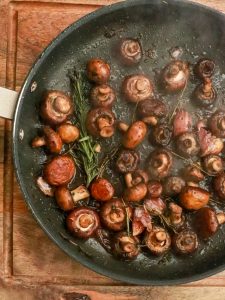 Non-stick cookware has a chemical coating called Teflon. Teflon has a compound called C8 or perfluorooctanoic acid. Many research studies have shown that C8 disrupts normal hormone function and may also lower testosterone levels in men.
Non-stick cookware has a chemical coating called Teflon. Teflon has a compound called C8 or perfluorooctanoic acid. Many research studies have shown that C8 disrupts normal hormone function and may also lower testosterone levels in men.
Many products also contains polytetrafluoroethylene or PTFE. These chemicals can lead to birth defects, infertility, thyroid disorder, liver disease, kidney disease, and testicular cancer. These chemicals are even found in babies because they are passed to them in the womb. This research study talks about the dangers. Even the American Cancer Society has voiced concerns.
The dangers have been known for quite some time, but have been hidden. DuPont paid a record $16.5 million fine for hiding the alarming truth that C8/PFOA chemicals were linked to cancer and birth defects (EWG, 2015). Some of these chemicals can even be found in jackets, shoes, and more. Read more on EWG.
If you can’t get rid of your teflon pans right way, be sure to keep the heat low and turn on your fan. High temperatures (570 degrees Fahrenheit) can cause these products to release toxic gases. Only use them if surfaces are unscratched. Also, be very careful about scratching the coating so you don’t get these chemicals in your food.
Nontoxic Bakeware & Nontoxic Pots and Pans
The safest cooking utensils to use as replacements are stainless steel, cast iron, and glass.
Lodge Cast Iron Skillet with Red Mini Silicone Hot Handle Holder, 8-inch With a cast-iron skillet, you get a better sear on your meat, which gives it more flavor! It makes the best stir fry, as well. We have this size plus a 6-inch and 10-inch, and use them all frequently. This is a must-have for those who love to cook!
Sabatier, Black Flex Turner
This is the best spatula I own. It’s not just useful for grilling or baking fish but for scraping cookies off a cookie sheet, flipping or removing eggs from a pan, and more! My husband and I use it more than any other spatula, and have recently bought another.
Where to Start with Choosing the Safest Cooking Utensils
I started with my pots and skillets because that was my greatest concern. Anything involving heat should be a greater concern, especially if you have scrapes in your pans, plates, or bowls. Otherwise, just pick a few products to replace around the kitchen every month.
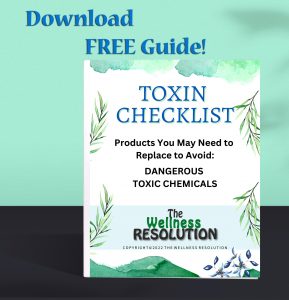
Download this Free Guide:
TOXIN CHECKLIST
(Products to Replace)
View All Blogs on Toxins
What are Toxins in the Body? (Overview of All Things Toxic)
DANGER! Toxic Ingredients in Skin Care Products
How to Replace Dangerous Skin Care Products
Indoor Air Toxins & Chemical Cleaners
Air Quality Solutions and Replacing Chemical Cleaners
Outdoor Toxins – What’s in your yard?
Methods to Detox Toxins Including Detoxing Naturally
Resources
Danner, Bridget. (2019, November 5). Bridget Danner/Hidden Sources of Toxins in Your Kitchen. Retrieved from: https://www.bridgitdanner.com/womens-wellness-blog/avoiding-toxins-plastics-in-the-kitchen
Giving Compass/12 Facts About Plastic Pollution You Need to Know. (2022, September 4). Retrieved from: https://givingcompass.org/article/10-facts-about-plastic-pollution-you-absolutely-need-to-know?gclid=Cj0KCQjwmouZBhDSARIsALYcourasoU9b6fcAwohDIHsaXmgeTRH9nN2e0fklIaok9J1Yl9Cmqmz41waAsfdEALw_wcB
Jacewicz, Natalie. (2017, October 6). NPR/Which Items In Our Kitchens Contain BPA?. Retrieved from: https://www.npr.org/sections/thesalt/2017/10/06/555900292/which-items-in-our-kitchens-contain-bpa
EWG/Timeline: BPA from Invention to Phase-Out. (2008, April 22). Retrieved from:
https://www.ewg.org/research/timeline-bpa-invention-phase-out
EWG/The Toxic Truth About A New Generation of Nonstick and Waterproof Chemicals. (2015, May 1). Retrieved from: https://www.ewg.org/news-insights/news-release/toxic-truth-about-new-generation-nonstick-and-waterproof-chemicals
Mo, Chuivan. (2020, August 31). COMPLIANCE GATE/Bisphenol A (BPA) Regulations in the United States: An Overview. Retrieved from; https://www.compliancegate.com/bisphenol-a-regulations-united-states/
Zanolli, Lauren. (2020, February 18). The Guardian/Are plastic containers safe for our food?. Retrieved from: https://www.theguardian.com/us-news/2020/feb/18/are-plastic-containers-safe-to-use-food-experts
Brazier, Yvette. (2021, May 23). MEDICAL NEWS TODAY/How does bisphenol A affect health?. Retrieved from: https://www.medicalnewstoday.com/articles/221205
I have a Wellness Coach Certificate, I'm an entrepreneur, an innovator, writer, and artist. My expertise includes over 7 years of marketing, research, and developing content for holistic health businesses. Plus, my own personal journey of becoming chronically sick: understanding what went wrong, and finding a way to heal and live a healthier life. I have a passion for wellness with a wealth of knowledge surrounding: wellness, flaws in healthcare, root causes for chronic illnesses, and alternative treatments.

